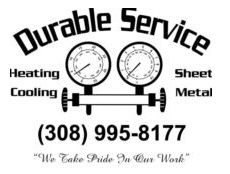
You shouldn’t need to sacrifice comfort or empty your wallet to keep your residence at a pleasant temperature during hot days.
But what is the best temperature, exactly? We discuss ideas from energy specialists so you can choose the best setting for your family.
Here’s what we suggest for the most energy-efficient setting for air conditioning in Holdrege.
Recommended Thermostat Settings for Summer
Most families find using the thermostat at 72-73 degrees provides ideal comfort. However, if there’s a huge difference between your inside and exterior temps, your electricity expenses will be bigger.
This is our advice based on the U.S. Department of Energy (DOE) and ENERGY STAR®.
While at home: 78 degrees. While that seems hot, there are ways you can keep your home cool without having the air conditioner running constantly.
Keeping windows and blinds down during the day keeps cool air where it should be—inside. Some window treatments, like honeycomb shades or plantation shutters, are made to provide more insulation and improved energy savings.
If you have ceiling fans in your residence, the DOE says you can increase thermostat temps about 4 degrees hotter without sacrificing comfort. That’s due to the fact they refresh with a windchill effect. As they cool people, not areas, turn them off when you leave a room.
If 78 degrees still appears too warm on the surface, try doing a trial for a week or so. Start by upping your thermostat to 78 degrees while you’re at your house. Then, progressively lower it while adhering to the ideas above. You might be surprised at how comfortable you feel at a higher temperature setting.
While away: 88 degrees. There’s no need to keep the air conditioning on all day while your home is vacant. Switching the setting 7–10 degrees higher can save you as much as 5–15% on your air conditioning expenses, according to the DOE.
When you get home, don’t be tempted to put your thermostat under 78 to cool your home faster. This isn’t useful and often produces a bigger electricity bill.
A programmable thermostat is a helpful way to keep your temp in check, but it requires setting programs. If you don’t use programs, you risk forgetting to increase the set temperature when you take off.
If you need a handy solution, think over installing a smart thermostat. This thermostat links with your phone, so it knows when you’re at home and when you’re gone. Then it instinctively adjusts temperature settings for maximum savings. How much exactly? Typically $180 yearly on heating and cooling, according to ENERGY STAR.
Another plus of having a smart thermostat? You can use your phone to monitor and change temperature settings from almost anywhere.
While sleeping: Around 70 degrees. While ENERGY STAR advises 82 degrees, that could be too uncomfortable for most families. The majority of people sleep better when their bedroom is chilly, so that’s why the National Sleep Foundation advises 60–67 degrees. But that may be too cold, depending on your clothing and blanket preference.
We suggest trying an equivalent test over a week, setting your temp higher and slowly decreasing it to choose the right setting for your family. On mild nights, you could discover keeping windows open at night and using a ceiling fan is a preferable idea than using the air conditioner.
More Approaches to Save Energy During Hot Weather
There are additional methods you can save money on air conditioning bills throughout hot weather.
- Upgrade to an energy-efficient cooling system. Central air conditioners only work for about 12–15 years and lose efficiency as they get older. An upgraded air conditioner can keep your house comfier while keeping energy costs down.
- Book yearly air conditioner tune-ups. Regular air conditioner maintenance keeps your unit operating properly and could help it work at better efficiency. It might also help lengthen its life expectancy, since it enables technicians to uncover small problems before they create a major meltdown.
- Change air filters often. Use manufacturer instructions for changing your air filter. A dusty filter can cause your system to short cycle, or run too frequently, and increase your electricity.
- Check attic insulation levels. Almost 90% of homes in the United States don’t have enough insulation, according to the Insulation Institute. Most southern climates should have 13–14” of attic insulation, while northern climates need 16–18”.
- Have your ductwork inspected. Ductwork that has separated over time can seep conditioned air into your attic, walls or crawl space. This can lead to huge comfort issues in your home, including hot and cold spots.
- Seal cracks, doors and windows. Keep humid air where it belongs by sealing openings. You can also caulk or weather strip doors to keep more conditioned air within your home.
Save More Energy During Hot Weather with Durable Service
If you need to use less energy during hot weather, our Durable Service specialists can help. Get in touch with us at 308-995-8177 or contact us online for extra information about our energy-saving cooling options.

